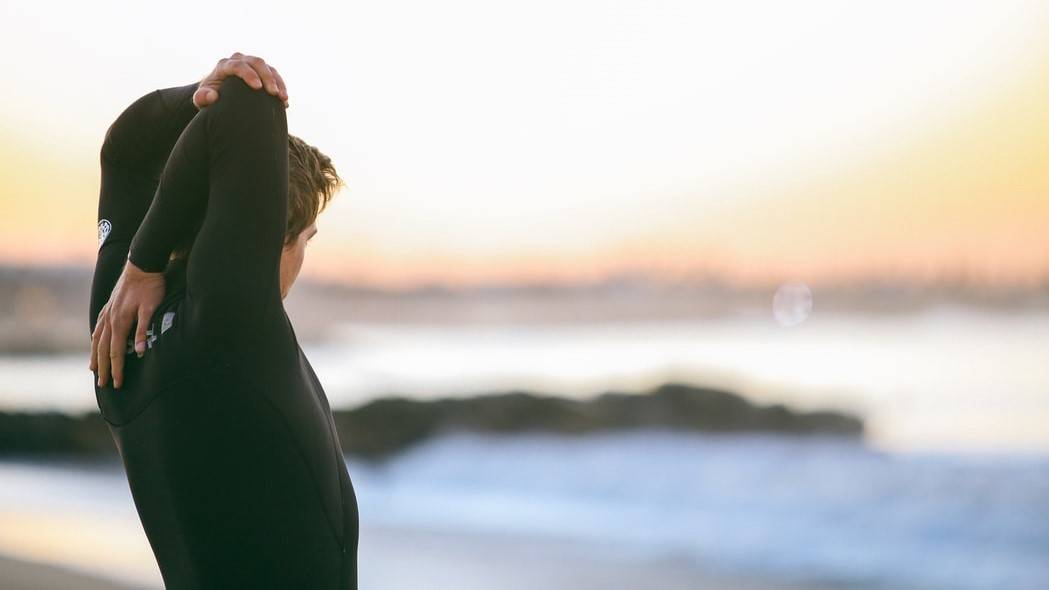Der Frühling ist da, die Triathlonsaison steht vor der Tür. Da die aktuellen Wassertemperaturen das Training oder den Wettkampf ohne Kälteschutz derzeit noch unmöglich machen, ist ein Neoprenanzug für die meisten essentiell. Und falls du in diesem Jahr das erste Mal an einem Triathlon teilnehmen willst, möchtest du wahrscheinlich noch keine 600€ für einen Wetsuit ausgeben.
Auch die sogenannten Einsteiger-Neos bieten die Eigenschaften, die einen Neo ausmachen: sie bieten einerseits vor allem den nötigen Kälteschutz. Andererseits trägt der natürliche Auftrieb des Materials erheblich zur Verbesserung der Wasserlage bei. Man schwimmt stabiler, kraftsparender und schneller. Das hilft vor allem Schwimmanfängern bei der ersten Disziplin. Dieser Aspekt bietet aber auch zusätzlich Sicherheit beim Freiwasserschwimmen, da man auch ohne Schwimmbewegungen nicht untergeht, d.h. zum Beispiel auch bei einem Krampf im offenen Gewässer bleibt man immer an der Wasseroberfläche.
Nachteil der Einsteiger-Neos: sie sind in der Regel nicht so flexibel wie etwas gehobenere Neos, man spürt das Material etwas mehr bei den Schwimmbewegungen, aber für den ersten Volkstriathlon oder eine kurze Runde im See reicht es allemal.
Robustheit als Vor- und Nachteil
Da die Einsteigermodelle meist etwas steifer sind, verkraften sie auch mal eine etwas stärkere Beanspruchung. Gerade beim An- und Ausziehen ist das Gezerre oft groß, und wo es bei den High-End-Modellen zu Rissen aufgrund zu langen Fingernägeln kommen kann, ist das bei den Anfänger-Neos meist kein Problem. Falls es doch zur Beschädigung kommt, tut das erstens nicht so weh wie bei einem Profi-Modell für bis zu 750€ und kann zweitens auch häufig noch durch einen Neopren-Spezialisten professionell repariert werden.
Zielgruppe
Ein Einsteiger-Neo ist genau richtig, wenn der erste Triathlon bzw. die erste Triathlonsaison mit kleineren Wettkämpfen (Schnuppertriathon/Volksdistanz) bevorsteht oder man als “Schwimmanfänger” gerade erst mit dem Kraulschwimmen begonnen hat. Gerade wenn man sich nicht sicher ist, ob einen das Triathlon-Fieber packt und man erstmal mit begrenztem Budget in diese materialintensive Sportart hineinschnuppern möchte, muss die erste Wetsuit-Wahl vielleicht noch nicht der 600€ Anzug sein.
Flexibilität
Bei den Profi-Produkten ist die Flexibilität im Arm- und Schulterbereich von großer Wichtigkeit. Einsteiger-Neos haben da zwar deutliche Abstriche, diese sind für Beginner aber meist kein Problem, da Ermüdung bei Distanzen bis zu 1500 m (olympische Distanz) meist kein Problem darstellt.
Lebensdauer
Durchschnittlich hält ein Neoprenanzug 5-10 Jahre. Das kommt natürlich auf die Nutzungshäufigkeit an. Mit der Zeit wird das Gummi (Neopren) spröde. Man kann sich das wie bei einem Fahrradreifen vorstellen. Dann fangen sich an Risse zu bilden. Eine Zeit lang kann man diese Cuts reparieren, aber irgendwann geht es dann nicht mehr. Auch die Flexibilität lässt natürlich mit dem Alter nach. Bei vielen Sportlern und Sportlerinnen findet aber eine Neuanschaffung deutlich früher statt, da sich dann oftmals die sportlichen Ambitionen und Wettkampfdistanzen erhöhen und damit dann ein neuer Neo mit besseren Eigenschaften diesen Abitionen eher entgegen kommt.
Abstriche bei zusätzlichen Features
Im Gegensatz zu den Profi-Modellen enthalten die Einsteiger-Neoprenanzüge folgende Features nicht:
- Nano-SCS-Beschichtung um den Reibungswiderstand auf dem Neoprenanzug noch weiter zu reduzieren
- Panels an Arm- und Beinenden, wodurch das “Wassergreifen und -abstoßen” verbessert werden soll
- Aerodome-Material (winzige, in das Material eingeschlossene, Gasbläschen, die noch einmal verbesserte Auftriebseigenschaften ermöglichen)
Passform als wichtigstes Kriterium
Ein Neoprenanzug kann noch so hochwertig und teuer sein - wenn er nicht passt, wird er weder Vorteil noch Freude bringen. Wichtig ist daher, zunächst die richtige Größe zu identifizieren: hierfür gibt es Größentabellen von jedem Hersteller in Bezug auf Körpergröße und Gewicht (Achtung: die Größentabellen zwischen verschiedenen Herstellern sind nicht immer deckungsgleich, man muss bei jedem Hersteller aufs Neue die richtige Größe finden). Wenn man einen Anzug zum ersten Mal anzieht, sollte man auf die enge, leicht kompressive Passform gefasst sein. Das fühlt sich im ersten Moment sehr ungewohnt an, aber im Wasser wird das Material in der Regel etwas weicher und gefälliger. Daher ist die körperbetonte im trockenen Zustand sehr wichtig. Für die richtige Passform ist dann das richtige Anziehen unbedingt erforderlich. Die Anleitung zum Anziehen eines Neos findet ihr > hier.




















